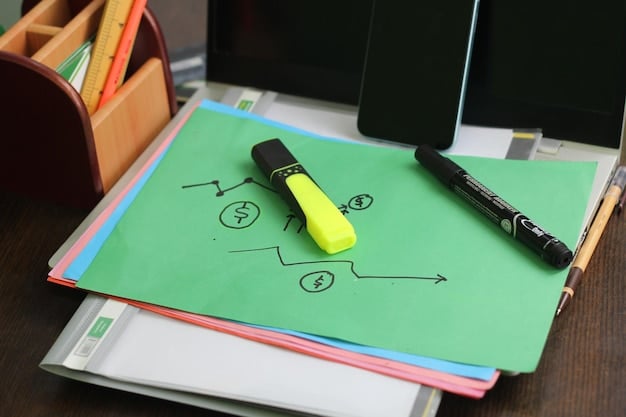Maximize Your Child’s IEP: 5 Strategies for Success in 2025

Maximize Your Child’s Special Education Plan: 5 Proven Strategies for IEP Success in 2025 involves proactive approaches, including thorough preparation, active participation, clear communication, data-driven decision-making, and ongoing collaboration to ensure the plan effectively meets a child’s unique needs.
Navigating the world of special education can be overwhelming, but with the right strategies, you can maximize your child’s special education plan: 5 proven strategies for IEP success in 2025. An Individualized Education Program (IEP) is a roadmap to your child’s educational journey, and ensuring its effectiveness is crucial.
Understanding the IEP Process: A Brief Overview
The IEP process is a structured framework designed to support students with disabilities. It involves several key steps, from initial referral to regular reviews, all aimed at creating a tailored educational plan.
Key Stages of the IEP Process
Understanding each stage can empower you to advocate effectively for your child.
- Referral and Evaluation: Identifying the need for special education services and conducting thorough assessments.
- IEP Meeting: Collaborating with educators and specialists to develop the IEP document.
- Implementation: Putting the IEP into action in the classroom and monitoring progress.
- Review and Revision: Regularly assessing the IEP’s effectiveness and making necessary adjustments.
Each stage provides opportunities for parental involvement and ensures the IEP remains relevant to your child’s evolving needs.
The IEP is not a static document; it’s a living plan that should be reviewed and revised at least annually, or more frequently if needed, to address your child’s changing educational needs.
Strategy 1: Thorough Preparation Before the IEP Meeting
Preparation is key to a successful IEP meeting. Gathering relevant information and understanding your child’s needs will help you advocate effectively.

Gathering Relevant Information
Start by collecting comprehensive data about your child’s academic, social, and emotional development.
- Review School Records: Analyze report cards, test scores, and teacher feedback to identify strengths and weaknesses.
- Document Observations: Keep a detailed log of your child’s behavior and learning patterns at home.
- Seek Professional Input: Consult with therapists, doctors, and other specialists who work with your child.
Having this information readily available will help you contribute meaningfully to the IEP discussion.
Preparation also involves understanding your rights and the school’s obligations under the Individuals with Disabilities Education Act (IDEA). Familiarize yourself with the legal framework that governs special education services.
Strategy 2: Active Participation During the IEP Meeting
Your voice is crucial during the IEP meeting. Actively participating ensures your child’s unique needs are addressed and considered.
Effective Communication Techniques
Clearly and respectfully communicate your concerns, observations, and goals for your child.
- Express Concerns Clearly: Articulate your worries about your child’s academic or social progress.
- Share Observations: Provide specific examples of how your child performs in different settings.
- Propose Solutions: Offer suggestions for accommodations, modifications, and support services that could benefit your child.
Active listening is equally important. Pay attention to what other team members say and ask clarifying questions to ensure you understand their perspectives.
Remember, the IEP meeting is a collaborative process. Work together with the team to create a plan that reflects the best interests of your child and effectively addresses their individual needs.
Strategy 3: Clear and Specific IEP Goals
Well-defined IEP goals are essential for measuring progress and ensuring accountability. Make sure the goals are specific, measurable, achievable, relevant, and time-bound (SMART).

Setting SMART Goals
Let’s break down the SMART goal framework:
- Specific: Clearly define what the child needs to achieve.
- Measurable: Include quantifiable metrics to track progress.
- Achievable: Set realistic goals that are challenging but attainable.
- Relevant: Ensure the goals align with the child’s overall educational needs.
- Time-Bound: Establish a timeline for achieving the goals.
For example, a vague goal might be “Improve reading skills.” A SMART goal would be “Increase reading comprehension from 60% to 80% on grade-level passages within six months.”
Regularly review and assess progress toward the IEP goals. If a goal is not being met, collaborate with the team to adjust the plan and implement new strategies. Specific and measurable goals provide a clear framework for tracking your child’s development.
Strategy 4: Data-Driven Decision-Making
Base IEP decisions on objective data rather than subjective opinions. This ensures the plan is grounded in evidence and effectively addresses your child’s needs.
Using Data to Inform the IEP
Data can come from various sources:
- Assessments: Standardized tests, classroom assessments, and progress monitoring data.
- Observations: Teacher and parent observations of the child’s behavior and learning patterns.
- Work Samples: Examples of the child’s work that demonstrate their skills and challenges.
For example, if data shows a child is struggling with math facts, the IEP should include targeted interventions and accommodations to address this specific area of need. Data should not be viewed in isolation; consider it alongside qualitative information, such as teacher and parent insights.
Regular data collection and analysis are crucial. Track progress towards IEP goals and make adjustments as needed. This iterative approach ensures the IEP remains responsive to your child’s evolving needs.
Strategy 5: Ongoing Collaboration and Communication
The IEP is not a one-time event but an ongoing process. Maintain open communication and collaboration with all members of the IEP team.
Building a Collaborative Team
Foster positive relationships with teachers, therapists, and other professionals involved in your child’s education.
- Regular Communication: Stay in touch with the team through emails, phone calls, or regular meetings.
- Shared Goals: Work together to establish common goals and strategies for supporting your child.
- Mutual Respect: Value each team member’s expertise and perspective.
Open communication is key to addressing challenges and celebrating successes. When everyone is on the same page, your child benefits from a consistent and supportive learning environment.
Document all communication and decisions made to ensure accountability and transparency. This creates a clear record of the IEP process and supports effective collaboration over time.
| Key Point | Brief Description |
|---|---|
| 📝 Preparation | Gather data and understand your child’s needs. |
| 🗣️ Participation | Actively voice concerns and share observations at meetings. |
| 🎯 SMART Goals | Set goals that are Specific, Measurable, Achievable, Relevant, and Time-bound. |
| 🤝 Collaboration | Maintain open communication with the IEP team. |
Frequently Asked Questions (FAQ)
▼
An Individualized Education Program (IEP) is a legally binding document that outlines the specific educational needs of a child with a disability and the services required to meet those needs.
▼
An IEP must be reviewed at least once a year. However, it can be reviewed more frequently if the child is not making adequate progress or if there are significant changes in the child’s needs.
▼
The IEP team typically includes the child’s parents, general education teacher, special education teacher, a school psychologist, and other relevant specialists, like a speech therapist or occupational therapist.
▼
If you disagree with the IEP, you have the right to request mediation or file a complaint with the state education agency. Document your concerns and work towards a resolution with the school.
▼
Gather all relevant information about your child’s academic and developmental progress. Make a list of concerns and goals. Consult with relevant professionals. Understand your rights under IDEA.
Conclusion
By implementing these five proven strategies – thorough preparation, active participation, clear goal setting, data-driven decision-making, and ongoing collaboration – you can effectively maximize your child’s special education plan and achieve IEP success in 2025. Remember, your involvement is crucial in ensuring your child receives the support and services they need to thrive.





